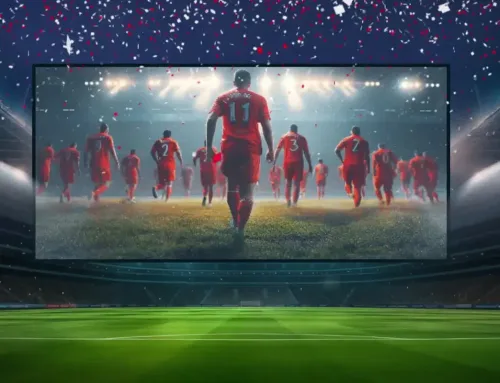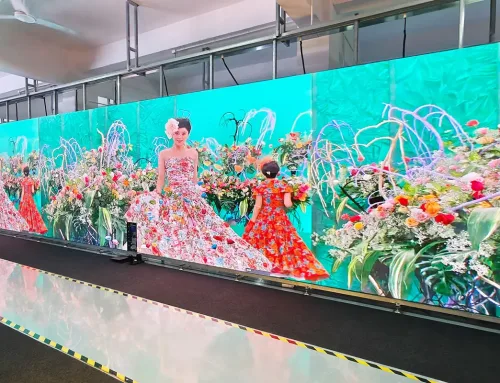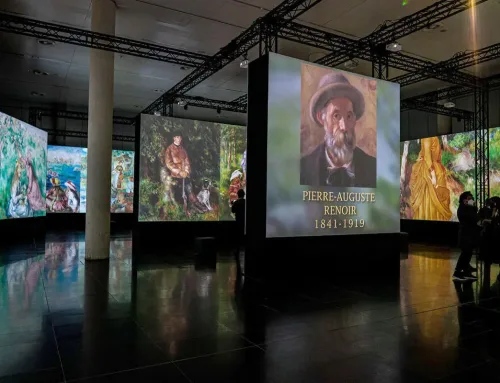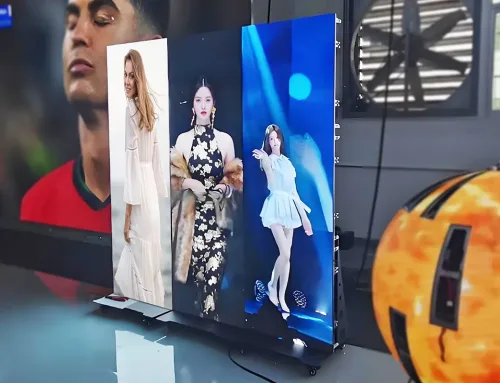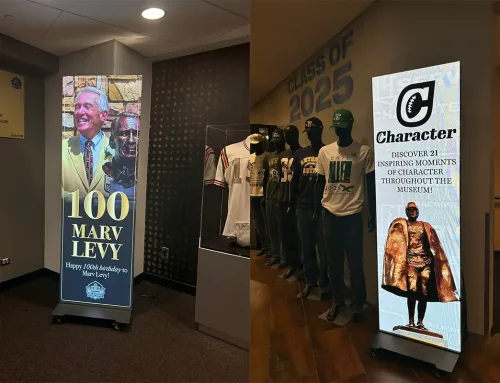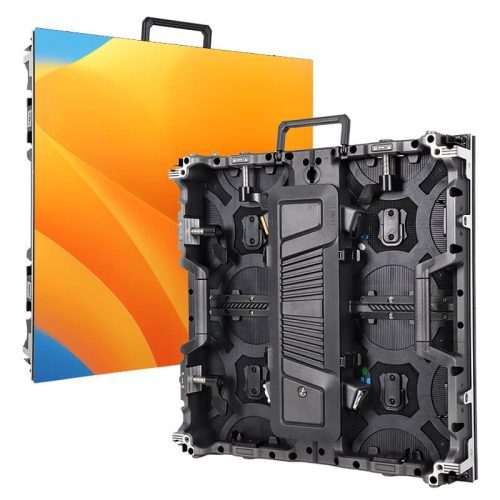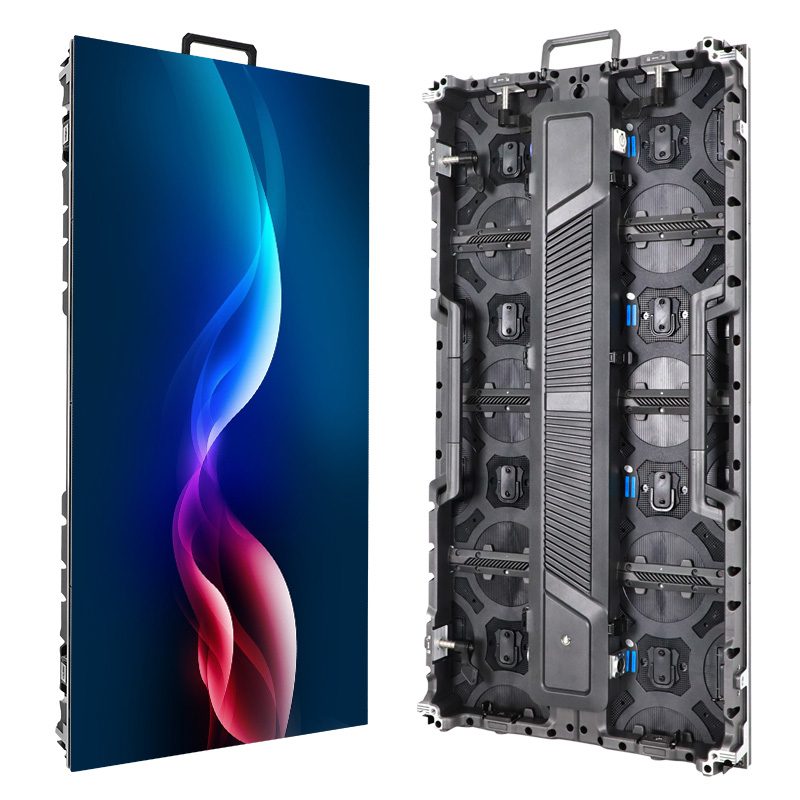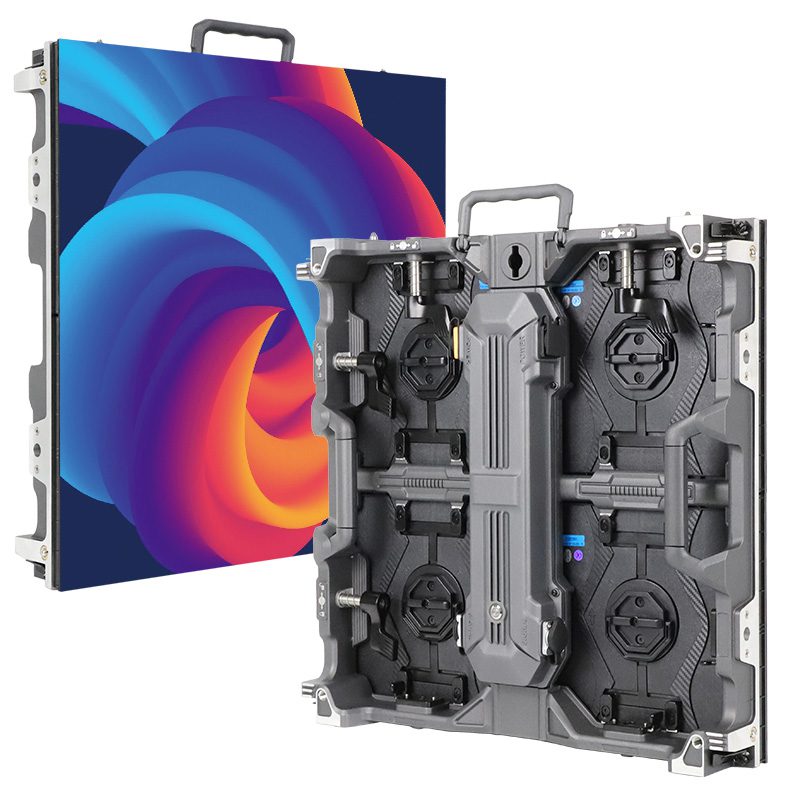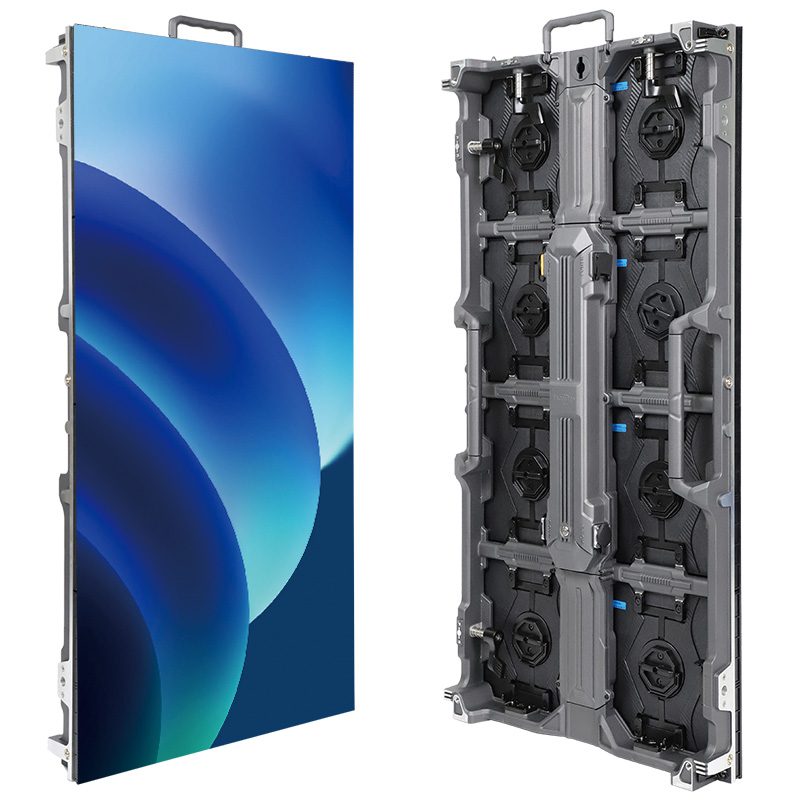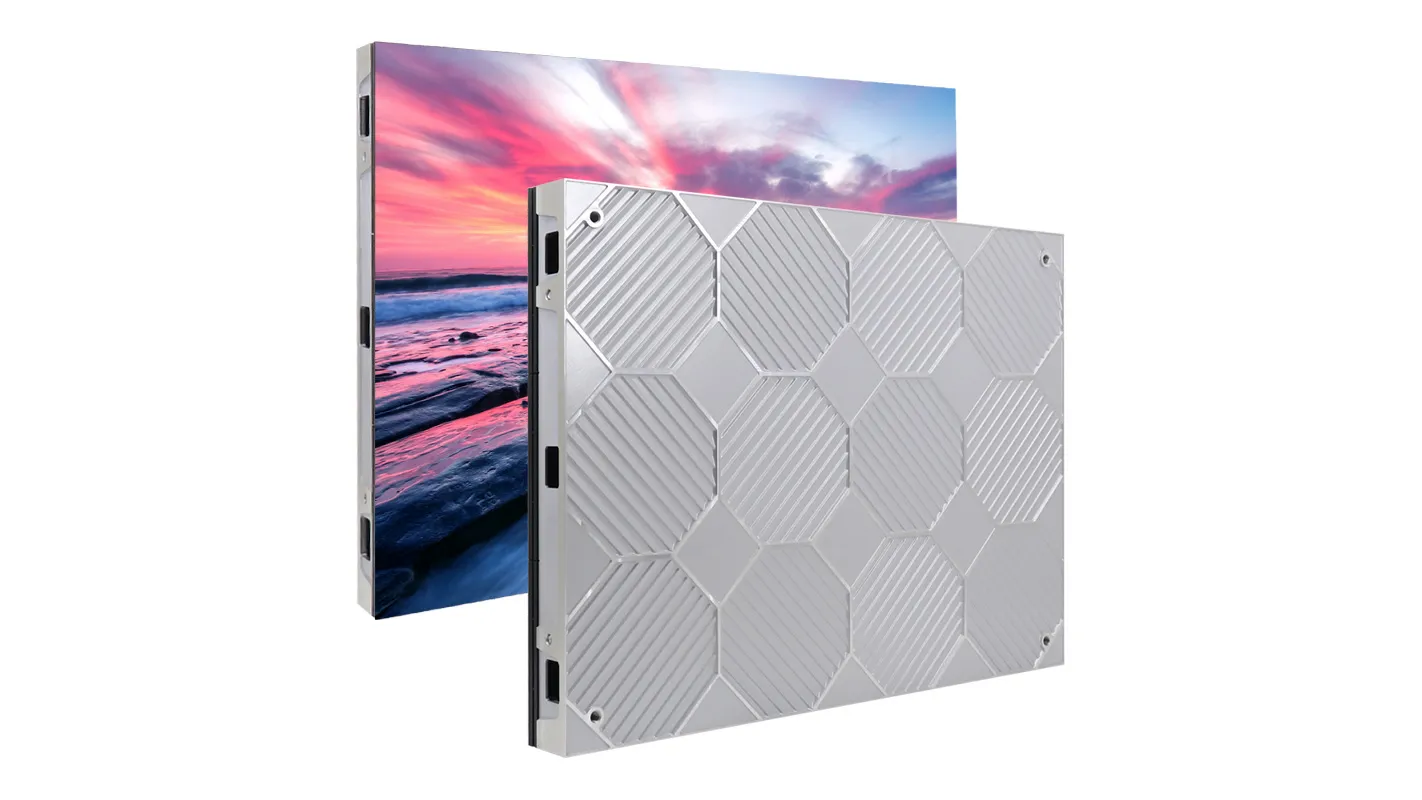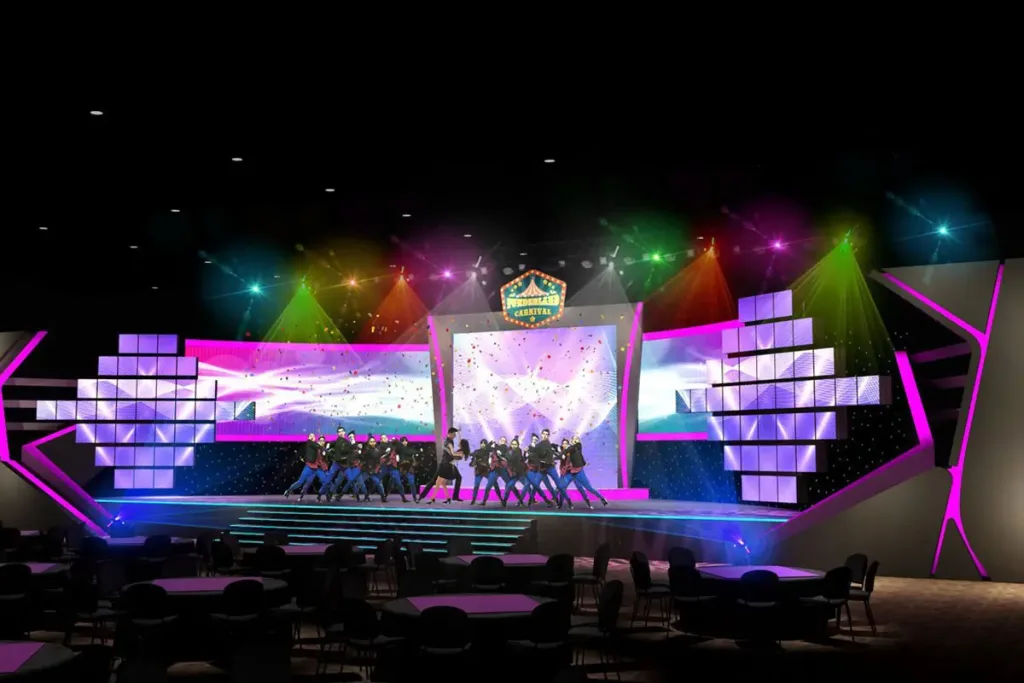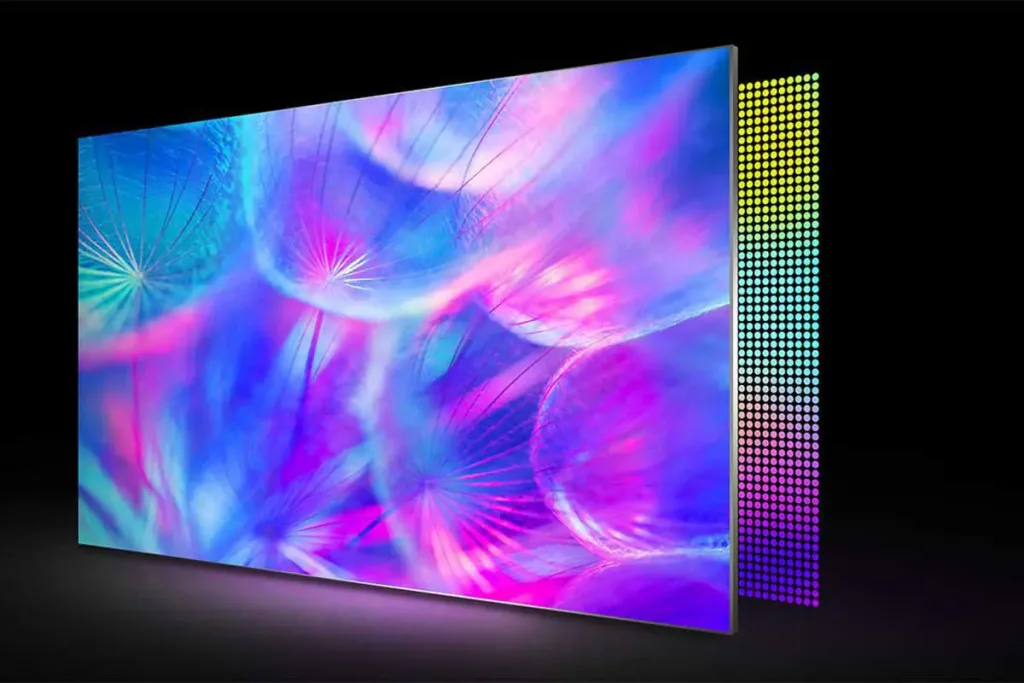In today’s visually-driven world, LED display screen has become an indispensable part of our daily lives, transforming how we interact with information, entertainment, and advertising. From the colossal billboards illuminating Times Square to the sleek digital menus in our favorite cafes, these vibrant displays are everywhere.
But what exactly makes LED technology so pervasive and powerful? This guide delves into the fascinating realm of LED screens, exploring their fundamental principles, diverse applications, and the exciting innovations shaping their future. Join us as we uncover how these brilliant displays are not just changing what we see, but how we experience the world around us.
catalogue
- 1.He aha te Whakaaturanga Whakaaturanga LED?
- 2.Me pehea te mahi a te mata whakaatu LED?
- 3.He aha te LED Whakaatu Mata Whakamahia Mo?
- 4.Whakaahua Nga tono o te Hangarau Mata Whakaaturanga LED
- 5.He Aratohu Tere mo nga Whakaaturanga Whakaaturanga Whakaaturanga LED i nga Ahumahi rereke
- 6.Me pehea te whiriwhiri i te Mata Whakaatu Matau LED
- 7.Kii whakauru
1.What is an LED Display Screen?
At its core, an LED display screen is a marvel of modern engineering, a cutting-edge digital visual technology that harnesses the power of light-emitting diodes (LEDs) to bring dynamic images, crisp text, and captivating videos to life. These screens are celebrated for their exceptional brightness, stunning color reproduction, and remarkable energy efficiency.
Thanks to these qualities, LED display screen has emerged as the preferred choice across a vast spectrum of industries, including advertising, entertainment, retail, transportation, and sports venues. Their ability to deliver high-resolution, eye-catching content while consuming minimal power makes them an ideal solution for both indoor and outdoor applications, even thriving in environments with intense ambient lighting or direct sunlight.
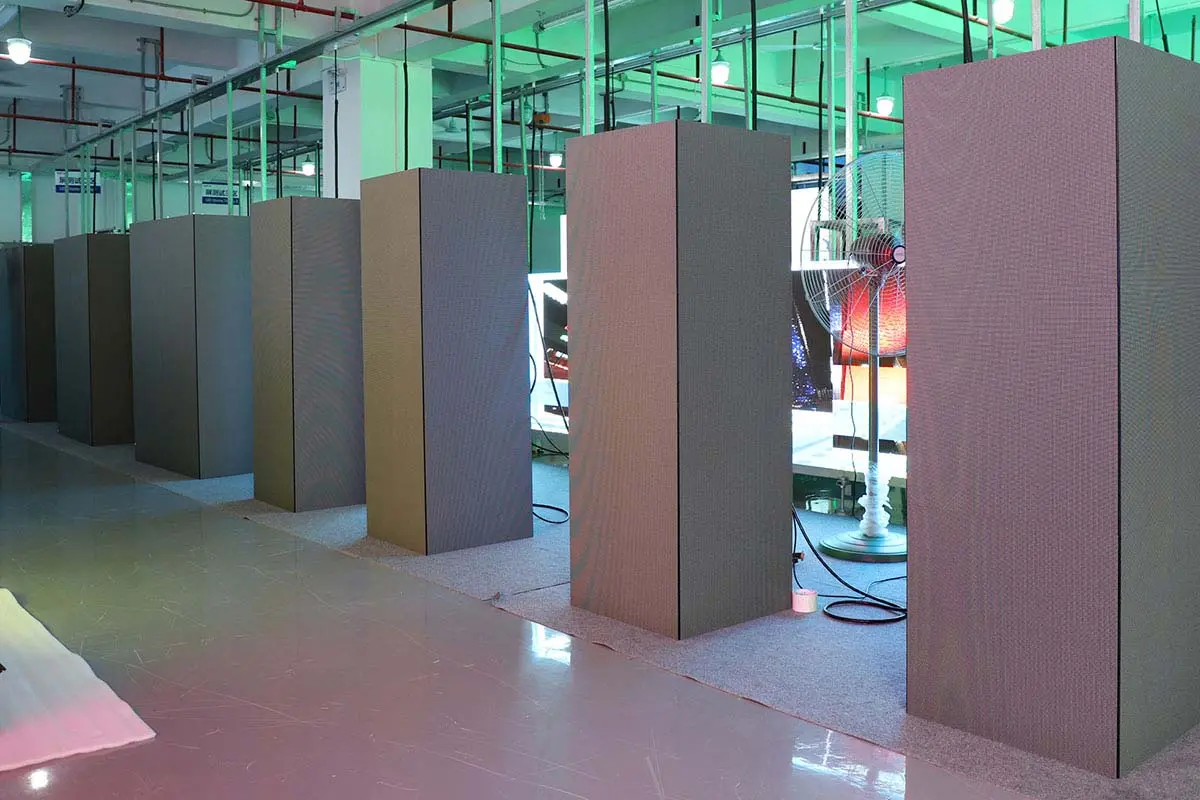
The primary advantages of LED displays over older technologies are clear: their capacity to render more vibrant colors, achieve higher contrast ratios, and maintain excellent image quality under various lighting conditions.
Furthermore, LED screens are renowned for their extended lifespan, low maintenance requirements, and impressive flexibility in terms of size and shape. These attributes collectively make them a versatile and cost-effective solution for businesses and organizations aiming to create a lasting visual impact.
2.How Do LED Display Screen Work?
The magic behind LED displays lies in their intricate design. These screens are meticulously engineered using arrays of tiny light-emitting diodes (LEDs), arranged in a precise grid pattern. Each individual LED is specifically designed to emit light in a particular color—most commonly red, green, or blue (RGB).
By skillfully blending these three primary colors at varying intensities, LED technology can reproduce the entire visible color spectrum, resulting in exceptionally vivid and lifelike images.
This advanced color-mixing capability is a key reason why LED screens are so highly regarded for delivering superior brightness, contrast, and high-definition visuals when compared to traditional display technologies. It’s not just about showing an image; it’s about creating an immersive visual experience.
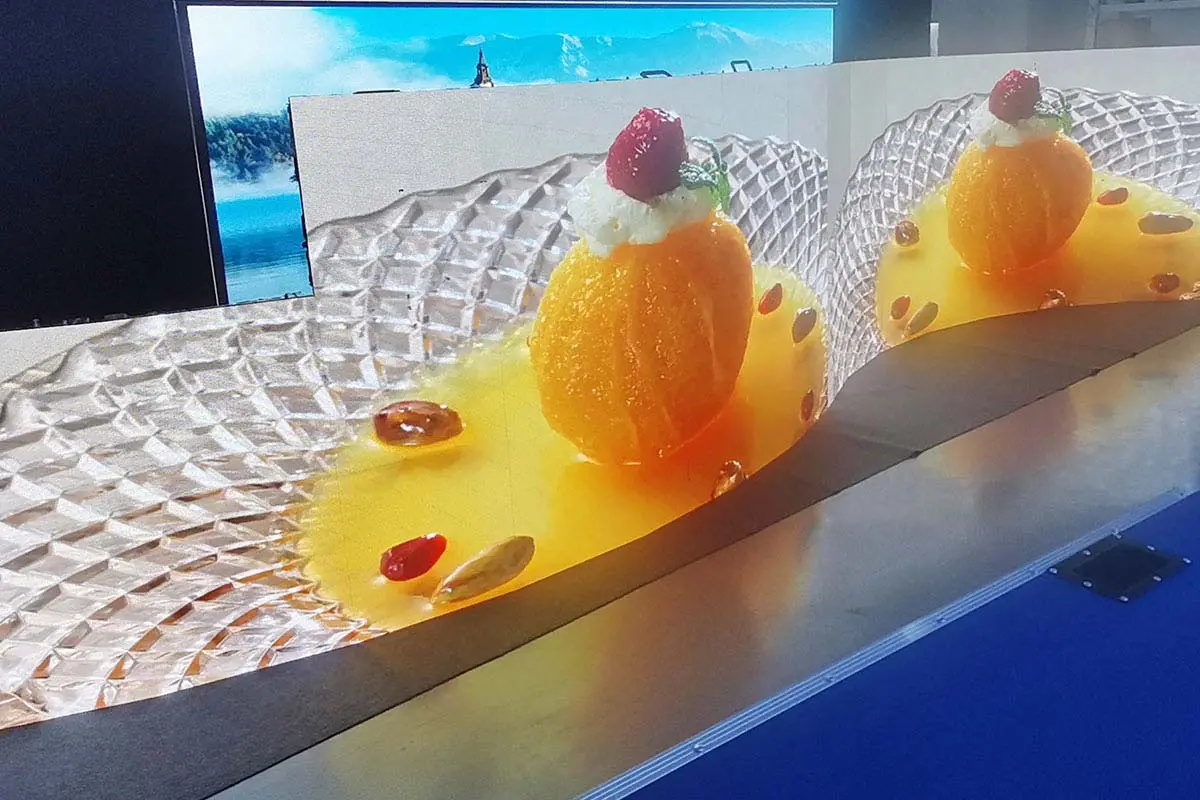
One of the standout features of LED displays is their remarkable ability to control each diode independently. This precise control allows for seamless adjustments in brightness and color for every single pixel, enabling dynamic visual effects such as smooth color transitions, fluid animations, and real-time content updates. This level of granular control ensures that the content displayed is always vibrant, clear, and perfectly adapted to its environment.
As a result, LED displays have become the go-to choice for a wide range of applications, including eye-catching digital billboards, interactive signage, and large-scale video walls in sports arenas and entertainment venues. Their versatility, energy efficiency, and ability to deliver stunning visuals make them an unparalleled solution for modern display needs.
3.What is LED Display Screen Used For?
LED display screen is incredibly versatile, finding applications across a vast array of industries and environments. Their ability to deliver high-impact visual content makes them an ideal solution for diverse communication and display needs. Let’s explore some of the key areas where LED screens are making a significant difference.
3.1 Advertising and Digital Signage
In the dynamic world of advertising, LED billboard has revolutionized how brands connect with their audiences. Their vibrant displays and ability to showcase dynamic content make them far more engaging than traditional static billboards. From bustling city centers to retail environments, LED digital signage captures attention and delivers messages with unparalleled clarity and impact.
LED Screens in Times Square
Perhaps the most iconic example of LED screens in advertising is Times Square in New York City. The colossal, dazzling LED billboards here are a testament to the technology’s power to create immersive and unforgettable visual experiences.
These screens transform the urban landscape into a vibrant canvas, showcasing advertisements, news, and artistic displays that captivate millions of visitors daily. They are not just signs; they are landmarks that define the modern advertising era.
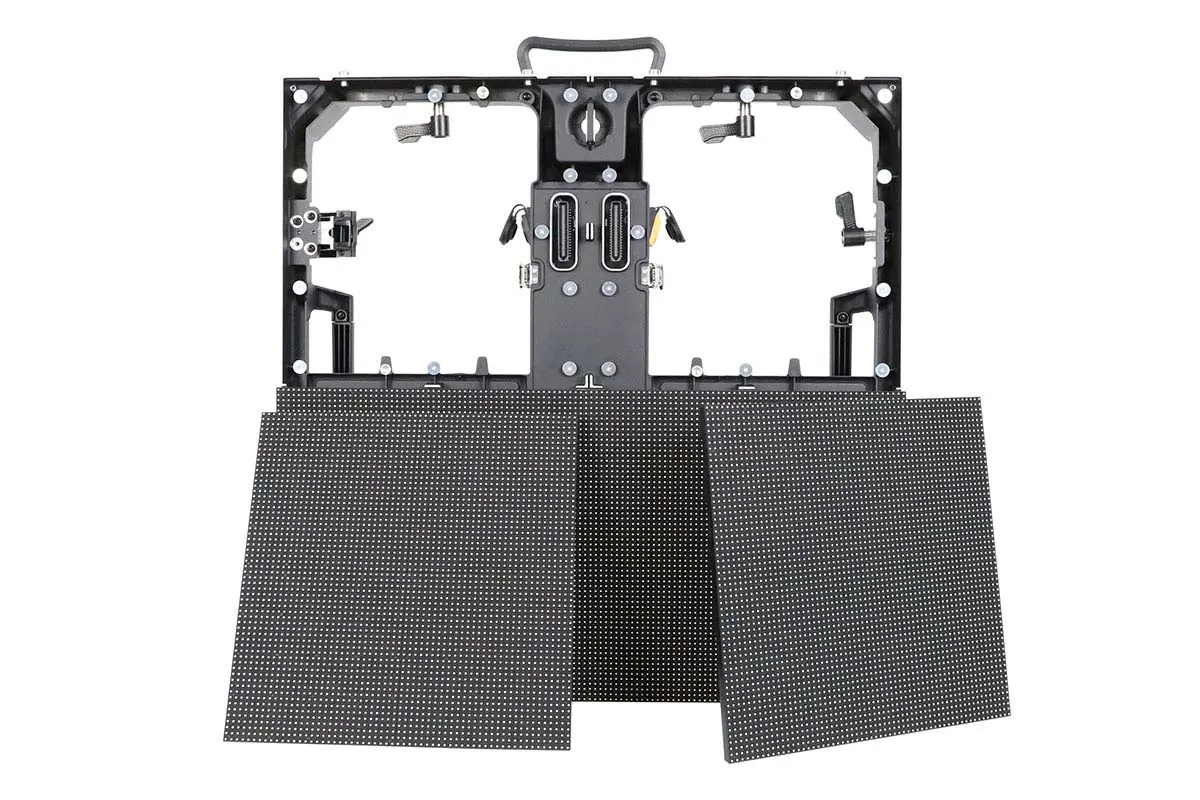
Digital Menu Boards in Restaurants
Beyond the grand scale, LED screens are also enhancing everyday experiences, such as dining. Digital menu boards in restaurants offer a modern, flexible, and visually appealing alternative to static menus.
They allow establishments to easily update offerings, highlight specials, and showcase mouth-watering visuals of their dishes. This dynamic presentation not only improves the customer experience but also streamlines operations, making it easier for businesses to adapt to changing demands.
LED Screens in Concerts and Live Shows
The entertainment industry has embraced LED screens to elevate live performances to new heights. During concerts and live shows, massive LED walls create stunning backdrops, display intricate visual effects, and provide close-up views of performers, ensuring that every audience member has an immersive experience. These screens are integral to the spectacle, enhancing the atmosphere and making each event truly unforgettable.
Stadium LED Displays
Sports venues worldwide rely heavily on LED displays to enhance the fan experience. From giant scoreboards that keep spectators informed to perimeter displays that showcase advertisements and real-time game statistics, LED screens are ubiquitous in stadiums.
They provide clear, bright visuals that are visible from every seat, bringing fans closer to the action and creating an electrifying atmosphere.
3.2 Retail and Store Displays
In the competitive retail landscape, attracting and engaging customers is paramount. LED screens offer retailers a powerful tool to create dynamic and interactive store environments that captivate shoppers and drive sales.
LED Screens in Luxury Retail Stores
Luxury retail brands leverage LED screens to create sophisticated and immersive shopping experiences. These displays are often integrated seamlessly into store designs, showcasing high-definition product visuals, brand stories, and interactive content that reflects the brand’s prestige. They transform the retail space into a gallery, inviting customers to explore and connect with the products on a deeper level.
Interactive LED Displays in Shopping Malls
Shopping malls are increasingly incorporating interactive LED displays to enhance visitor engagement. These screens can serve as digital directories, provide information about promotions, or even offer interactive games and experiences. By providing dynamic and personalized content, interactive LED displays make shopping more engaging and convenient, encouraging longer visits and repeat business.
3.3 Public Transportation and Information Systems
LED screens play a crucial role in modern public transportation hubs and information systems, providing real-time updates and essential information to commuters and travelers. Their clarity and visibility make them ideal for busy environments where information needs to be conveyed quickly and effectively.
LED Screens in Airports
Airports utilize LED screens extensively for flight information displays, gate assignments, and passenger guidance. The high brightness and contrast of LED technology ensure that critical information is easily readable, even in brightly lit terminals. These displays help manage passenger flow, reduce stress, and enhance the overall travel experience.
Smart Bus Stops
Modern bus stops are evolving into smart information hubs with the integration of LED screens. These displays provide real-time bus arrival times, route information, and public service announcements. By offering accurate and up-to-date information, smart bus stops improve the efficiency and convenience of public transportation, making it a more attractive option for commuters.
3.4 Education and Corporate Environments
LED screens are transforming learning and working environments, offering dynamic tools for presentations, collaboration, and information sharing. Their superior visual quality and interactive capabilities make them invaluable assets in modern classrooms and corporate settings.
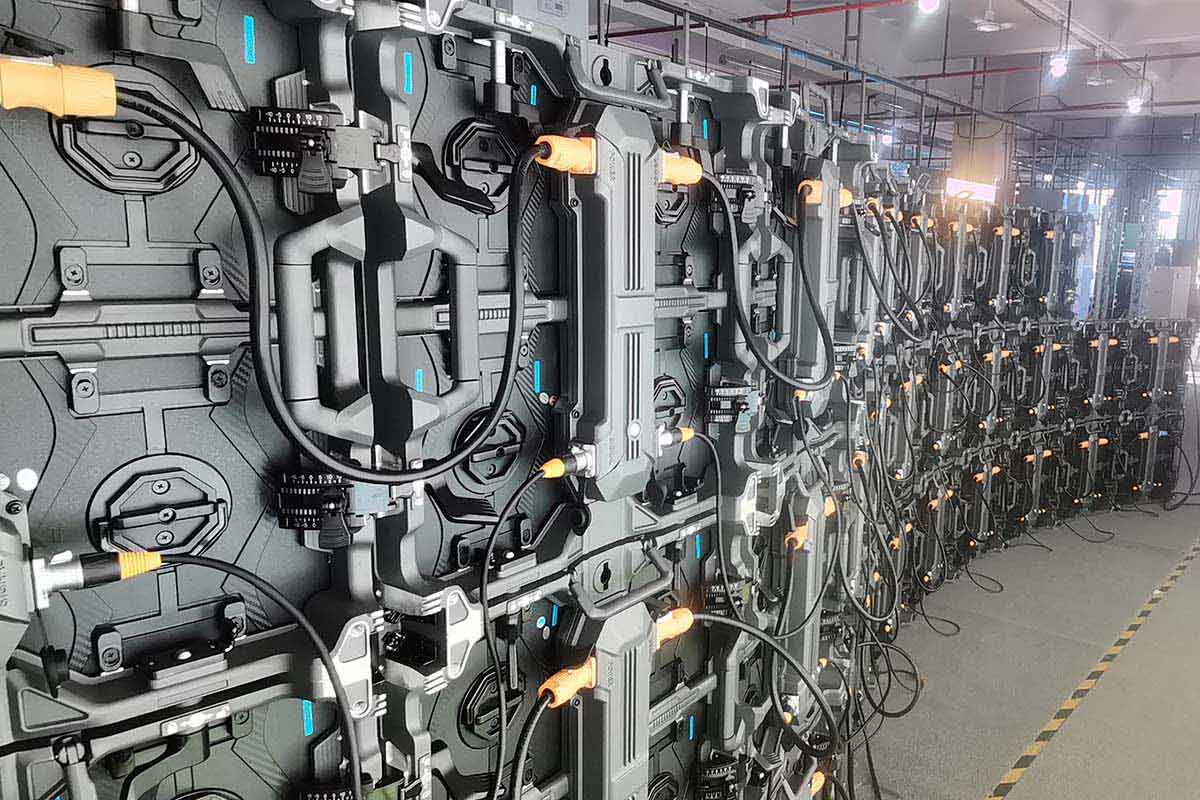
LED Screens in Modern Classrooms
In modern classrooms, LED screens are replacing traditional whiteboards and projectors, creating more engaging and interactive learning experiences. These displays allow educators to present multimedia content, facilitate collaborative activities, and provide students with a visually rich learning environment. The vibrant colors and high resolution make complex concepts easier to understand, fostering a more dynamic educational process.
Corporate Video Walls
Corporate environments use LED video walls for various purposes, including impressive lobby displays, dynamic presentation backdrops, and collaborative meeting room solutions. These large-format displays enhance communication, showcase company achievements, and create a sophisticated and technologically advanced image for businesses. They are perfect for displaying data, presentations, and live feeds with exceptional clarity.
3.5 Healthcare and Hospitals
LED screens are increasingly being adopted in healthcare settings, improving patient experience, facilitating communication, and even aiding in medical procedures. Their reliability and high-quality imaging capabilities are particularly beneficial in this critical sector.
LED Screens in Hospitals
Hospitals use LED screens for patient information displays, waiting room entertainment, and digital signage for navigation. These displays help reduce patient anxiety, provide clear directions, and keep visitors informed. The bright and clear visuals ensure that important messages are easily seen and understood in busy hospital environments.
4.Emerging Applications of LED Display Screen Technology
As LED technology continues to evolve at a rapid pace, its applications are expanding far beyond traditional advertising and entertainment. We are witnessing a new wave of innovation where LED displays are being integrated into smart infrastructure, residential spaces, and industrial environments, paving the way for more connected, efficient, and visually rich futures.
4.1 Smart Cities and Urban Planning
LED displays are becoming a cornerstone of smart city initiatives, playing a vital role in enhancing urban living and managing city resources more effectively. Their ability to provide real-time information, coupled with energy efficiency, makes them an ideal component for modern urban infrastructure.
Traffic Management Systems
In the realm of traffic management, LED screens are indispensable. They are used in variable message signs (VMS) to provide real-time traffic updates, warn drivers of congestion or hazards, and guide them to alternative routes.
These dynamic displays help optimize traffic flow, reduce commute times, and improve road safety. The clarity and visibility of LED signs ensure that critical information is conveyed effectively, even in adverse weather conditions, contributing to smoother and safer urban mobility.
Public Information Networks
LED displays are also integral to public information networks within smart cities. They are deployed in public squares, parks, and transportation hubs to disseminate important announcements, emergency alerts, and community information.
These networks can provide real-time updates on public events, weather conditions, and civic initiatives, fostering a more informed and engaged citizenry. By providing accessible and dynamic information, LED screens help create more responsive and resilient urban environments.
4.2 Residential and Home Applications
The allure of LED technology is increasingly making its way into our homes, transforming personal entertainment and smart living experiences. As the technology becomes more affordable and versatile, LED displays are becoming a central feature in modern residences.
Home Theater Systems
For the ultimate cinematic experience at home, LED screens are emerging as a superior alternative to traditional projectors and large-screen TVs. Custom-built LED home theater systems offer unparalleled brightness, contrast, and color accuracy, delivering stunning visuals that rival commercial cinemas.
The modular nature of LED panels allows for screens of virtually any size, transforming living rooms into immersive entertainment hubs where movies, sports, and games come alive with breathtaking clarity and vibrancy.

Smart Home Integration
Beyond dedicated home theaters, LED displays are being seamlessly integrated into smart home ecosystems. Imagine interactive LED panels embedded in walls, displaying ambient information, controlling smart devices, or serving as dynamic digital art.
These integrated displays can provide personalized content, from family photos to real-time energy consumption data, enhancing both the aesthetics and functionality of smart homes. They represent a future where our living spaces are not just smart, but also visually intelligent and responsive to our needs.
4.3 Industrial and Manufacturing Uses
In industrial and manufacturing settings, LED displays are proving invaluable for improving operational efficiency, safety, and communication. Their durability, clarity, and ability to withstand harsh environments make them perfectly suited for demanding industrial applications.
Factory Floor Displays
On factory floors, large LED displays provide critical real-time information to workers, including production metrics, safety warnings, and operational instructions. These displays can show key performance indicators (KPIs), machine status, and progress towards production targets, enabling immediate adjustments and improving overall productivity.
The high visibility of LED screens ensures that information is easily digestible, even in noisy or dimly lit industrial environments, contributing to a more efficient and safer workplace.
Control Room Applications
Control rooms, the nerve centers of many industrial operations, are increasingly relying on high-resolution LED video walls. These massive displays provide operators with a comprehensive overview of complex systems, from power grids to transportation networks.
The ability to display vast amounts of data, live feeds, and detailed schematics with exceptional clarity allows for better monitoring, faster decision-making, and more effective incident response. LED video walls in control rooms enhance situational awareness and operational control, ensuring the smooth and safe functioning of critical infrastructure.
4.4 Example Graphic: LED Display Applications by Industry
Note: A visual representation, such as an infographic or chart, would typically be placed here to illustrate the diverse applications of LED displays across various industries. This graphic would visually categorize and highlight the examples discussed above, providing a quick and comprehensive overview for the reader.
5.A Quick Guide to LED Display Screen Applications in Various Industries
| Industry | Application | Example Use Case |
|---|---|---|
| Advertising | Digital billboards, signage | Times Square, New York |
| Entertainment | Concerts, sports events | Taylor Swift’s concert visuals |
| Retail | In-store displays, digital menu boards | Luxury retail stores and shopping malls |
| Transportation | Public transit, airports, bus stops | Airport flight information displays |
| Healthcare | Patient information, medical imaging | Hospital waiting room displays |
| Education | Classroom teaching, corporate offices | Interactive learning screens in schools |
| Smart Cities | Public information, traffic management | Traffic updates and smart city signage |
| Residential | Home entertainment, smart home integration | Home theater systems, smart panels |
6.How to Choose the Right LED Display Screen
To simplify the selection process, consider these guiding questions:
- Where will the screen be located? (Indoor or Outdoor)
- What is the typical viewing distance? (This helps determine the optimal pixel pitch)
- What kind of content will be displayed? (Static images, videos, live feeds, interactive content)
- What is the desired visual impact? (High-definition, large-scale, immersive)
- What is the budget? (This will influence size, resolution, and features)
- How frequently will the content need to be updated? (This impacts CMS requirements)
By carefully evaluating these factors, you can make an informed decision that ensures your LED display screen not only meets your current needs but also provides a future-proof solution for your visual communication strategies.
7.Conclusion
As we’ve explored throughout this comprehensive guide, LED display screen is far more than just sophisticated visual tools; they are dynamic platforms that have fundamentally reshaped how we communicate, entertain, and interact with the world around us.
From the towering digital billboards that define urban skylines to the intricate displays enhancing our homes and workplaces, the pervasive presence of LED technology is a testament to its unparalleled versatility and transformative power.



